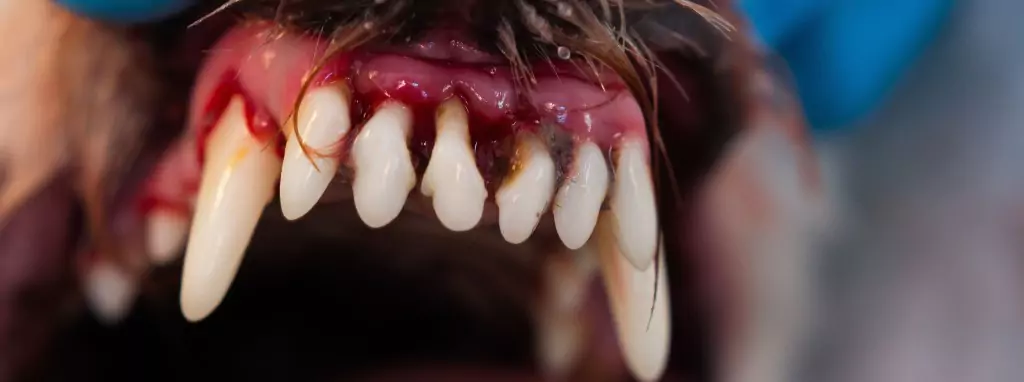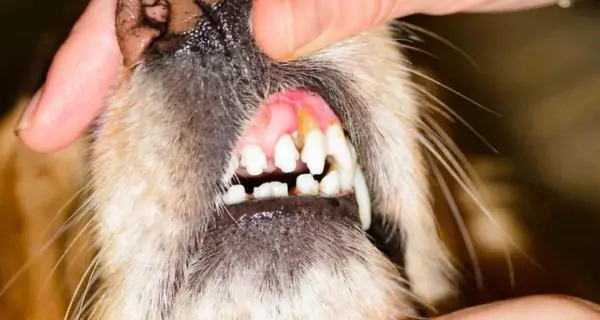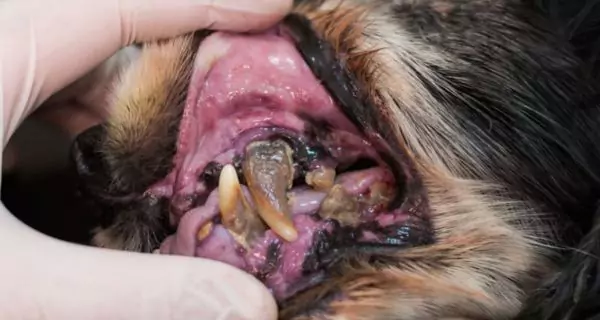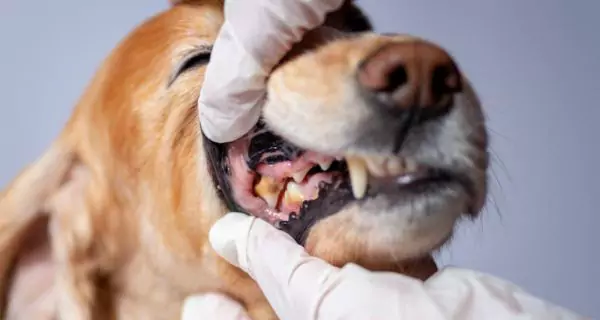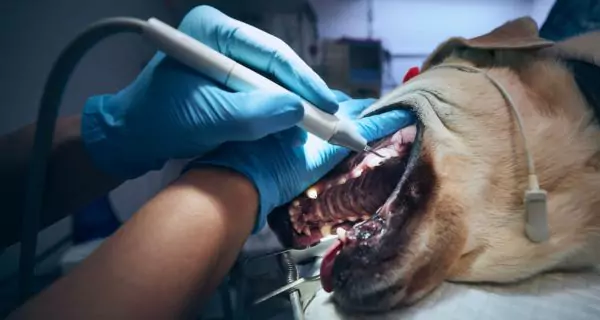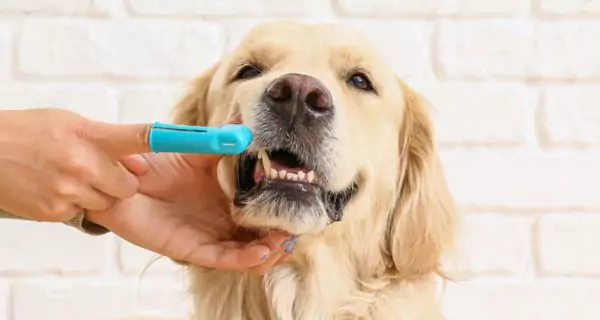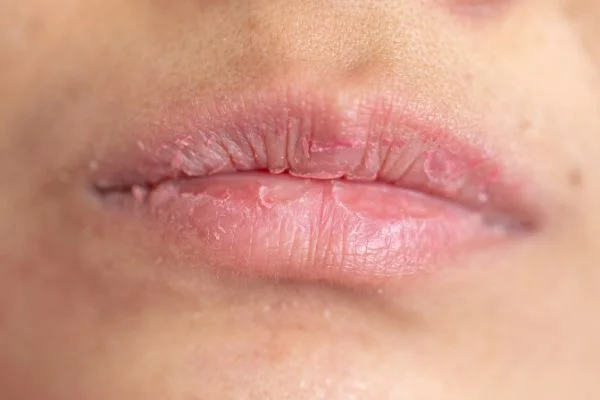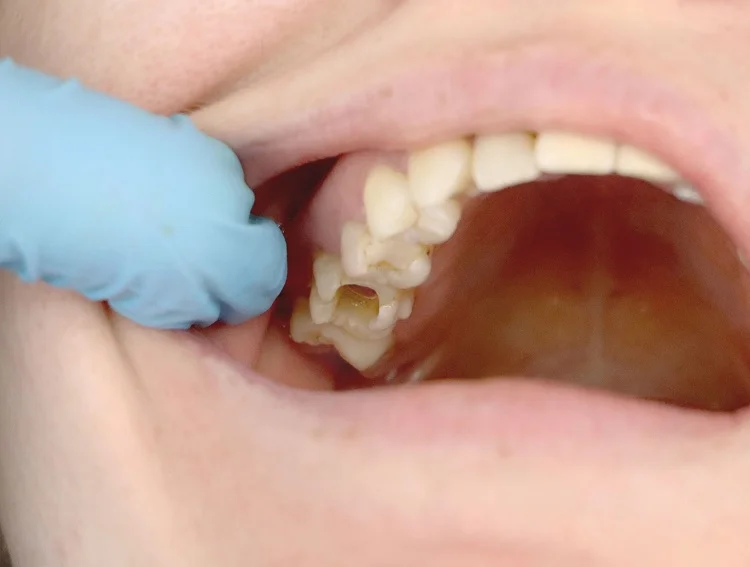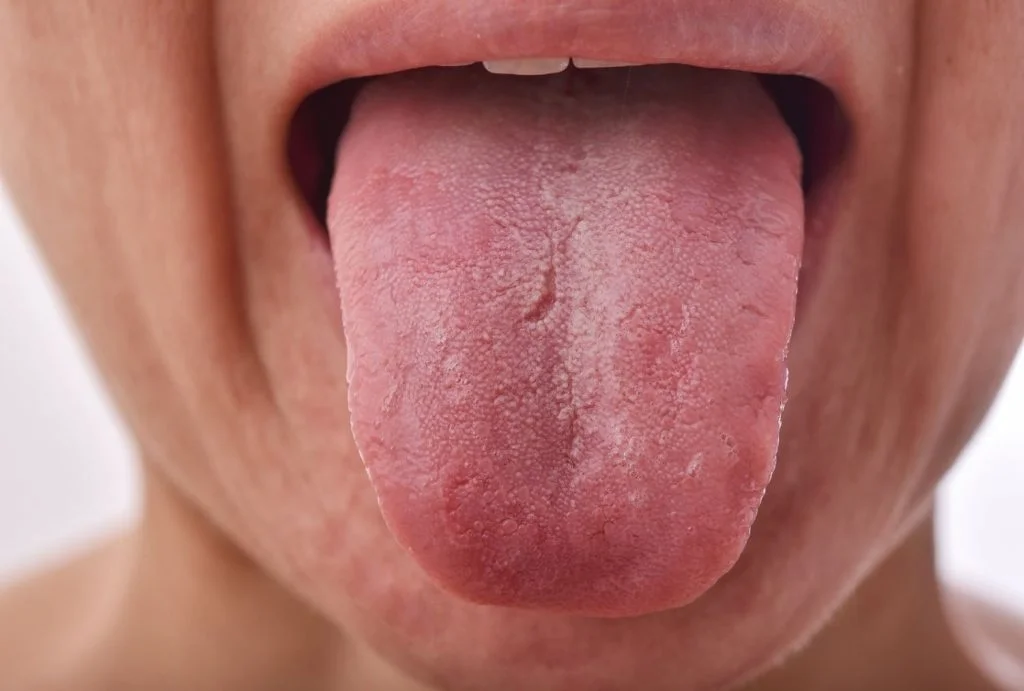Last Updated on: 30th December 2025, 08:23 am
Periodontal disease in dogs is a common bacterial infection affecting the gums and bone that support their teeth. It can cause bad breath, gum inflammation, tooth loss, and serious health issues if bacteria spread to organs. You can prevent it with daily brushing, dental chews, water additives, and regular vet checkups. Early care protects your dog’s smile and overall health.
This past April 11th marked International Pet Day—an ideal moment to celebrate the ones who give us unconditional love every single day. Let’s be honest: our dogs aren’t just pets. They’re family. They fill our homes with joy, and they deserve all the care we can give them.
Showing love to our pets goes beyond giving them snacks, belly rubs, or strolls in the park; it also means caring for their health, and that includes their teeth.
In this article, we’ll explain periodontal disease in dogs, how to recognize the signs and prevent it at home, and when it’s time to visit the vet. We’ll also share helpful products you can add to your dog’s dental care routine.
What is gum disease in dogs?
Periodontal disease is a form of bacterial infection that affects the gums and bone that supports the teeth. It’s one of the most common health problems in adult dogs, impacting up to 80% of dogs over three years old. Despite being so common, it often goes unnoticed until the damage is already advanced.
This disease is a slow, progressive condition that starts with the buildup of food and bacteria along the gum line. If not removed through regular brushing, this buildup turns into a sticky film called plaque, which eventually hardens into tartar (also called calculus).
Tartar irritates the gum tissue and over time can lead to chronic inflammation. This can cause gum recession, bone loss, and even tooth loss. But the impact doesn’t stop in the mouth; bacteria can also enter the bloodstream and reach vital organs like the heart, liver, and kidneys, putting your dog’s overall health at serious risk.
Stages of periodontal disease in dogs
As the disease advances, each stage brings greater damage and more obvious symptoms. Here’s how it typically progresses:
Stage 1 – Gingivitis (early and reversible)
This is the mildest stage and the only one that can be reversed with good dental care.
Signs to watch for:
- red, swollen, or sensitive gums
- light bleeding when brushing or chewing
- persistent bad breath
- yellow or brown teeth from plaque
- excessive drooling
At this point, tartar hasn’t deeply set in yet and a professional dental cleaning can easily correct the issue.
Stage 2 – Early periodontitis
Tartar begins accumulating beneath the gumline, creating small pockets between teeth and gums where bacteria thrive.
Typical symptoms:
- heavier tartar buildup at the gumline
- receding gums and increased bleeding
- mild pain when chewing
- preference for soft food
- bad breath gets stronger
This stage may still be managed with a professional cleaning under anesthesia and consistent home care.
Stage 3 – Moderate periodontitis
The infection spreads to deeper layers of bone and tissues that support the teeth. At this point, dogs often begin to show behavior changes due to pain or discomfort.
What to look for:
- pain when chewing (may avoid hard food or chew on one side)
- loose teeth or teeth that appear longer (from gum recession)
- gums that bleed frequently
- low energy, irritability, or acting distant
- pawing at the mouth or face
Treatment may require the extraction of affected teeth and more intensive dental procedures.
Stage 4 – Advanced periodontitis
This is the most severe stage, with serious consequences for both dental and overall health. The infection can enter the bloodstream and spread to internal organs.
Symptoms at this stage:
- tooth loss
- gum infections or pus-filled abscesses
- severe swelling in the jaw or gums
- refusal to eat, leading to noticeable weight loss
- ropey or bloody saliva
- blood in the water bowl or visible on chew toys
- extreme bad breath
Treatment often involves surgery, multiple extractions, antibiotics, and possibly hospitalization if the infection has spread to vital organs.
What are the causes and risk factors of periodontal disease in dogs?
The main cause of periodontal disease in dogs is plaque. It can affect any dog, but certain factors make some pets prone to developing it. A combination of lifestyle, breed, age, and existing health conditions can significantly increase the risk.
Key risk factors:
- Lack of regular dental care: Without consistent brushing or professional cleanings, plaque and tartar build up quickly, leading to gum disease.
- Soft or wet food diets: These types of food don’t require much chewing and often stick to the teeth, promoting plaque accumulation.
- Small or toy breeds: Breeds like Chihuahuas, Poodles, and Yorkies often have crowded teeth, making it easier for tartar to form in hard-to-reach areas.
- Older age: Senior dogs may have a weaker immune system and are susceptible to chronic inflammation and infection.
Underlying health conditions: Dogs with kidney or heart disease may experience worsened symptoms, as these illnesses can be aggravated by bacteria entering the bloodstream from infected gums.
When should you see the vet?
Dogs are masters at hiding pain. In the wild, showing weakness can make them vulnerable, so it’s instinctive for them to mask discomfort, even when it’s serious. By the time signs of periodontal disease become obvious, your dog could already be experiencing chronic pain or complications.
Even if you have a solid dental care routine at home, some symptoms require professional attention. If your dog shows any of the warning signs—such as persistent bad breath, inflamed or bleeding gums, pain while chewing, appetite loss, or visible tartar buildup—it’s time to schedule a dental exam with your veterinarian.
During the visit, the vet will examine your dog’s mouth and may recommend x-rays, a professional cleaning under anesthesia, or extractions, depending on how advanced the condition is.
Why is early treatment so important?
Periodontal disease isn’t just about your dog’s teeth—it can impact their entire body. If left untreated, bacteria from infected gums can enter the bloodstream and reach vital organs like the heart, liver, and kidneys. This can lead to serious systemic health problems.
Dental care is more than just keeping their breath fresh—it’s an essential part of protecting your dog’s overall well-being and helping them~A live a longer, healthier life.
Acting early makes all the difference: treatment is easier, more affordable, and—most importantly—your dog avoids unnecessary pain.
How can you prevent periodontal disease in dogs?
Periodontal disease is preventable and manageable when caught early. A strong prevention strategy includes two main parts: regular vet care and consistent at-home dental hygiene.
Professional cleanings and dental exams
Just like humans, dogs need routine dental checkups to detect and treat issues before they become serious. Most vets recommend a full dental evaluation every 6 to 12 months.
These visits are a great time to ask questions about your dog’s oral health and get personalized advice. Cleanings are typically done under anesthesia to ensure a thorough and pain-free experience for your pet.
Caring for your dog’s teeth at home
Between vet visits, it’s important to maintain a daily dental routine to keep plaque and tartar in check. With some consistency and the right tools, you can make dental care a normal part of your dog’s day.
What are the most helpful products for at-home dental care for dogs?
- Daily brushing: Use a dog-specific toothbrush and toothpaste (never use human toothpaste). Recommended brands: Virbac CET, Vet’s Best.
- Dental wipes: a good option for dogs who dislike brushing.
- Dental chews: Treats like Greenies, Oravet, and DentaLife reduce plaque and keep dogs engaged.
- Water additives: Products like TropiClean Fresh Breath help fight bacteria and freshen breath.
- Chew toys: Durable toys from KONG Dental or Benebone promote chewing and help naturally clean teeth.
Periodontal disease in dogs is much more than just “bad breath.” It’s a serious condition that can cause pain, long-term health issues, and a noticeable decline in your dog’s quality of life.
On special days like International Pet Day, it’s great to spoil your furry friend with treats and extra love. But the best way to show you care is by taking charge of their health.
By building good habits, using the right products, and scheduling regular vet visits, you can make sure your best friend has a healthy smile—and a happier, longer life.
Frequently Asked Questions
What’s the safest way to clean my dog’s teeth at home?
How long does a professional dental cleaning take for dogs?
What’s the difference between plaque and tartar?
Can I use my own toothpaste to brush my dog’s teeth?
Will my dog be in pain after a dental cleaning or tooth extraction?
Voice and Search (Q&A)
How can I prevent gum disease in my dog?
Brush your dog’s teeth daily with dog-specific toothpaste, give dental chews, and schedule regular vet cleanings every 6 to 12 months.
What are the first signs of gum disease in dogs?
Look for bad breath, red or swollen gums, bleeding when chewing, and yellow tartar at the gumline.
When should I take my dog to the vet for dental problems?
If your dog has bad breath, bleeding gums, visible tartar, loose teeth, or pain while eating, see a vet as soon as possible.
Share
References
1. Cunha, E., Tavares, L., & Oliveira, M. (2022). Revisiting periodontal disease in dogs: How to manage this new old problem? Antibiotics, 11(12), 1729. https://doi.org/10.3390/antibiotics11121729
2. Fries, W. C. (2012, 26 September). The Perils of Gum Disease in Dogs. WebMD. https://www.webmd.com/pets/dogs/features/perlis-gum-disease-dogs
3. Reiter, A. M. (2018). Dental Disorders of Dogs. MDS Veterinary Manual. https://www.msdvetmanual.com/dog-owners/digestive-disorders-of-dogs/dental-disorders-of-dogs
4. Santos, J. D. P. D., Cunha, E., Nunes, T., Tavares, L., & Oliveira, M. (2019). Relation between periodontal disease and systemic diseases in dogs. Research in Veterinary Science, 125, 136–140. https://doi.org/10.1016/j.rvsc.2019.06.007
5. USDA. (2018). Canine Periodontal Disease (PD). United States Department of Agriculture. https://www.aphis.usda.gov/sites/default/files/AC-Aids-for-Dogs_Canine-Periodontal-Disease_0.pdf
-
Dr. Yeidy Carolina Mesa [Author]
DDS Yeidy Carolina Mesa Passionate Dentist | Advocate for Accessible Oral Health Education Graduating from Universidad CES in 2022, I am a dedicated general dentist with a lifelong passion for helping others and making a meaningful impact in the world. My journey into dentistry began at the age of 7, inspired by my own experience with braces and overcoming a fear of the dentist. This personal journey shaped my mission to help patients conquer their own dental anxieties and embrace a healthier,...
View all posts
-
Nayibe Cubillos M. [Medical Reviewer]
Pharmaceutical Chemestry |Pharmaceutical Process Management | Pharmaceutical Care | Pharmaceutical Services Audit | Pharmaceutical Services Process Consulting | Content Project Manager | SEO Knowledge | Content Writer | Leadership | Scrum Master
View all posts
A healthcare writer with a solid background in pharmaceutical chemistry and a thorough understanding of Colombian regulatory processes and comprehensive sector management, she has significant experience coordinating and leading multidisciplina...


